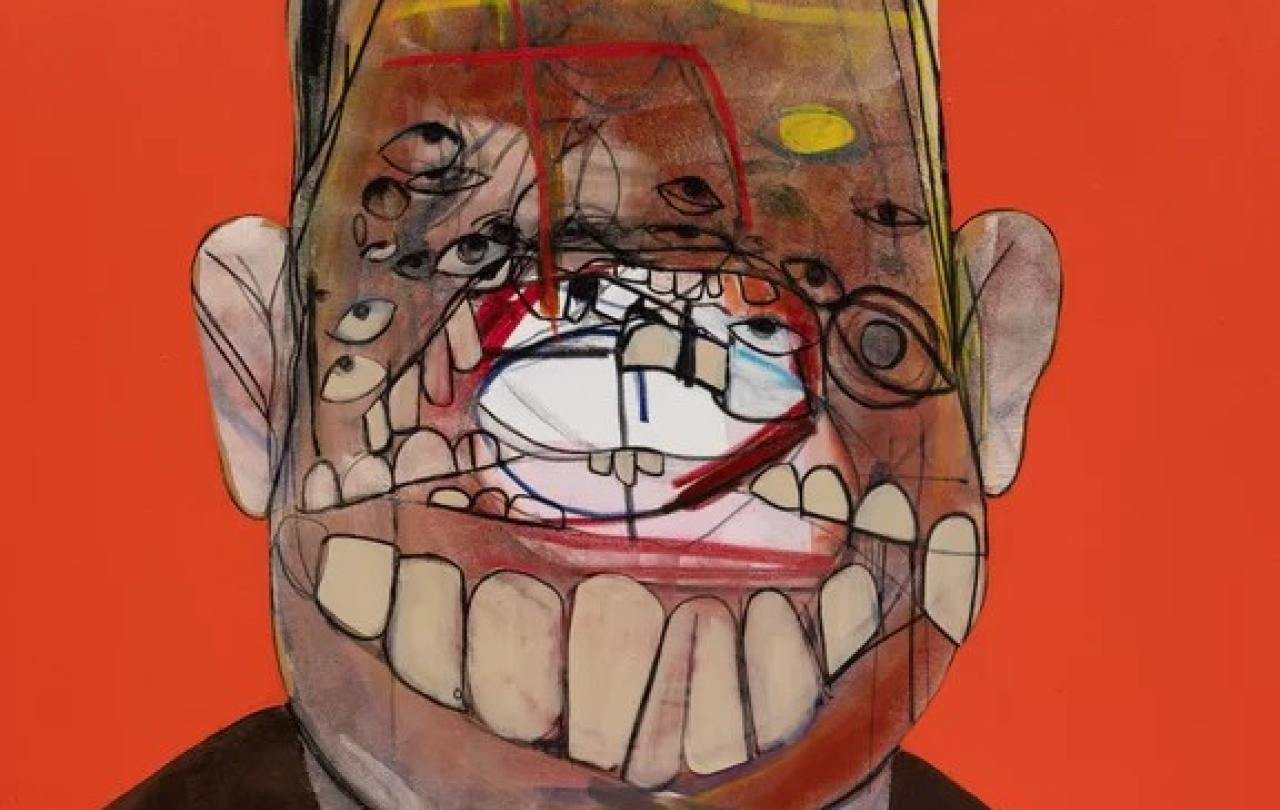
Are the dreams of Bibi Netanyahu about to be crushed? As the Israeli prime minister’s coalition teeters, what is remarkable is that he has survived so long. Central to this survival is his purpose – a dream of a secure Israel. We need to unpack such leaders’ dreams and understand why they are so potent.
Langston Hughes, in his poem ‘Harlem,’ asks what ‘What happens to a dream deferred?’ Several possibilities are put forward: ‘Does it dry up like a raisin in the sun? And an alternative: ‘Maybe it just sags like a heavy load?’ And finally ‘Or does it explode?’
It’s possible that Hughes referred to Harlem race riots in the 1930s and 1940s, but no-one knows for sure. The question is what happens when a dream is put on hold – or worse, destroyed – in the face of struggle?
Do we press on? Do we give up? What happens if we press on, and things do not work out? Or perhaps we press on, and things do work out. Hughes’ poem encourages us to ask these questions.
Looking back, Hughes’ poem is interesting but obviously gloomy, without hope. A dream is deferred. It withers, and then vanishes. But what if a dream is – when encountering struggle – maintained, kept in tact? The dream, perhaps nearly lost, emerges in the end, stronger than it was before.
Hughes’ poem is one of struggle and eruption. Not struggle and emergence. It is a despairing poem, one that denies the possibility of resurrection from the brink of death, even if the obstacles are significant.
We all have dreams, perhaps about peace, career, family, community, love, or something else. Inevitably, these dreams are – as dreams always are, in order to test our faith - met with opposition.
In these moments, we have two options: we can believe in what we see – the dream faltering, withering on the vine, ever so slowly. Or we can believe in the unseen, in which the dream re-emerges from whatever resistance it encounters. The former values the material, what we can actually see. The second values and trusts in what we cannot see. This brings us back to the point of faith.
'I have lost count of how many political obituaries I have written about Netanyahu — and how many resurrection stories.’
The ability to struggle and emerge, in which death or near-death is followed by resurrection, is a quality that is in short supply in modern political leadership. It is easily – and not surprisingly – overlooked in a culture prone to despair and hopelessness, in which we are met with a new crisis at every corner.
But some leaders have a unique, if not baffling, quality: the ability to struggle and emerge stronger, somehow renewed. They resurrect themselves where this was thought impossible. And when they have this quality, they become unrelenting forces, whatever you might think of them.
No leader better embodies this quality in the political West than Israeli Prime Minister Benjamin Netanyahu (or ‘Bibi’ for short). Netanyahu strengthens whenever he is on the ropes, perhaps because he is on the ropes.
Although a profoundly disliked figure by many, Netanyahu’s ability to struggle and emerge merits serious study from any student of politics. It is worth asking where his ability to struggle and emerge, resurrecting oneself from the depths of despair – in seemingly impossible situations – comes from?
Ishaan Tharoor puts it well in a recent Washington Post article: ‘Yet Netanyahu is expert at defying the odds.’ However, puzzlingly few articles are written on this topic – Netanyahu’s ability to come back from seemingly impossible circumstances.
Columnist Nicholas Goldberg comes even closer to the essence of resurrection in a Los Angeles Times op-ed in 2020, in which he writes ‘Over the years, I have lost count of how many political obituaries I have written about Netanyahu — and how many resurrection stories.’ He later comments on Netanyahu’s single life mission focused on security.
Both articles are more anti-Netanyahu than they are a reflection on the why and how of his countless resurrections. So it is worth asking: what is behind this quality?
A mission is fundamental to resurrection, in which certain politicians find a way through whenever the world counts them out.
While commentators focus on the ills of Netanyahu’s tenure as Israeli Prime Minister – indictments of corruption and possible future jail time, thwarting of a two-state solution in favour of the Abraham Accords, and the security failures that contributed to the October 7 disaster – they fail to consider deeper questions related to Tharoor’s description of Netanyahu as constantly ‘defying the odds.’
Neglected in analyses on Netanyahu is the deep trauma of his brother Yonatan’s passing in the famous Operation Entebbe. Neglected is the fact that he was wounded, sometimes severely, on many occasions while fighting for the Israeli special forces. And neglected is the influence of his father Benzion, a notable academic well-known for his writing on the historical oppression of the Jewish people (and on his own later rejection by the Israeli academic community).
These are powerful, deep-seated experiences if not major traumas, which – as Israeli friends well-acquainted with Netanyahu wisely note – underpin his clear life mission of increasing Israeli security in a dangerous world.
Goldberg puts this mission, even if uncharitably, as follows in his column: ‘Netanyahu has stood for one key proposition: that peace is not to be trusted; it is a pipe dream pushed by starry-eyed doves who fell hard for the likes of Yasser Arafat. According to Netanyahu, only battening down, fighting back hard, building walls and rejecting compromise protects the country.’
Netanyahu provides us with a crucial lesson in political leadership: a clear and simple life mission provides the ability to claim victory from the jaws of defeat, even in the most seemingly intractable of circumstances. A mission is fundamental to resurrection, in which certain politicians find a way through whenever the world counts them out.
A mission – simple because it is grounded in brokenness (the death of his brother) – provides Netanyahu (and other politicians that have this quality) with a strategic and tactical advantage that cannot be replicated by opponents without similar purpose. Such mission is not fleeting but enduring, Netanyahu resisting all temptations that might thwart his single-minded purpose.
In the case of Israel, no other Israeli political leader has operated with the same sense of mission as has Netanyahu over the last two decades. For if this were the case, Netanyahu would not currently be in power.
Our focus therefore should never be on dreams deferred, as per Hughes’ poem, but rather on the realisation of our dreams – underpinned by unique and consistent life missions.
Commentators, focusing on external circumstances – the current direction of the war, certain decisions made, the opinions of well-read ‘experts’ – neglect these deeper human questions at their peril, because the answer to the question of purpose helps people find ways through where none seem to exist. Purpose, not circumstance, allows a political leader to struggle and emerge in circumstances where most others falter.
For wider context, we can here turn to the example of Jesus, whose resurrection follows his trials at Gethsemane. When Jesus prays in Gethsemane, it is not clear how he should act. Jesus does not know what God wants from him. But he knows that he must carry out the will of his Father.
He asks ‘My Father, if it is possible, let this cup pass from me, yet not what I want but what you want’. Jesus is alone in his deliberation. He asks and waits, and in this waiting, the way forward is revealed. Here we see, in its most poignant form, struggle and emergence. Jesus is resurrected three days following his death, when even his disciples had counted him out.
Our focus therefore should never be on dreams deferred, as per Hughes’ poem, but rather on the realisation of our dreams – underpinned by unique and consistent life missions. Discerning these missions is not easy. If anything, there is considerable pain involved in doing so.
Yet, struggle that involves the possibility of failure of a dream, within a consistent and singular life mission, contains within it the seeds of success. The dream emerges intact from whatever short-term struggle it faces, if not strengthened.
A way is found where none previously existed, when those focused merely on the seen long counted a person out. In the long run, mission enables victory: the realisation – not deferral – of dreams.





